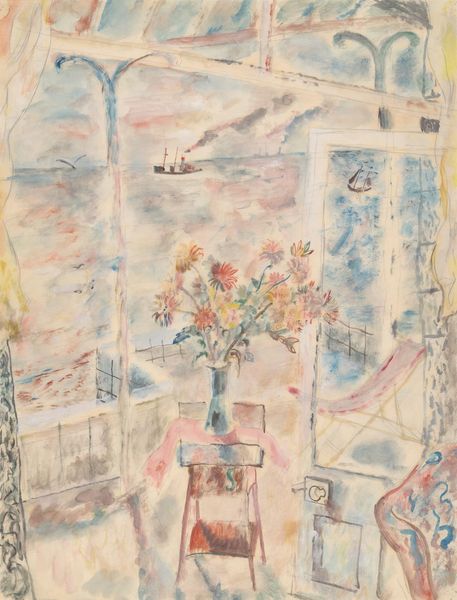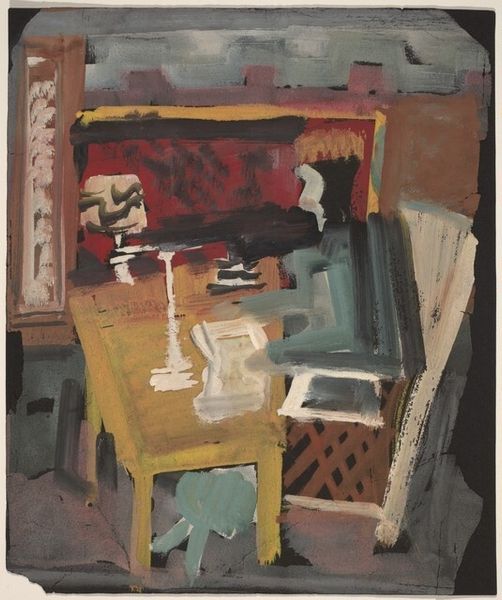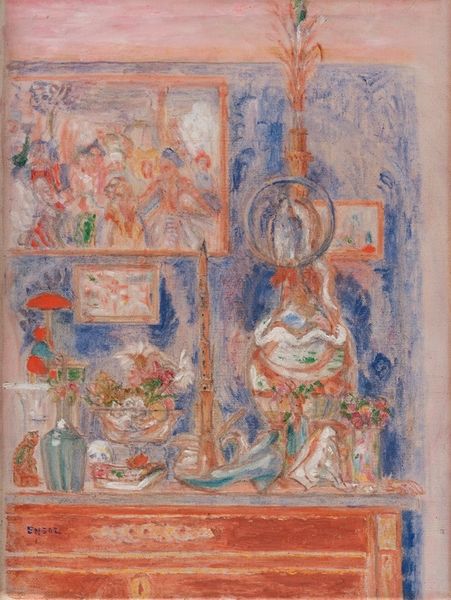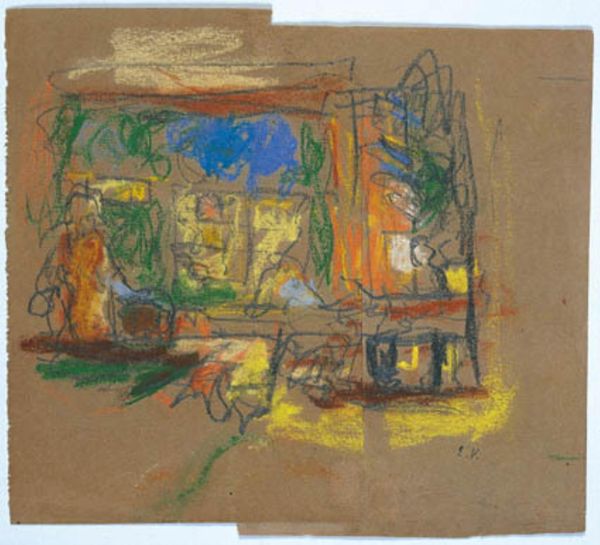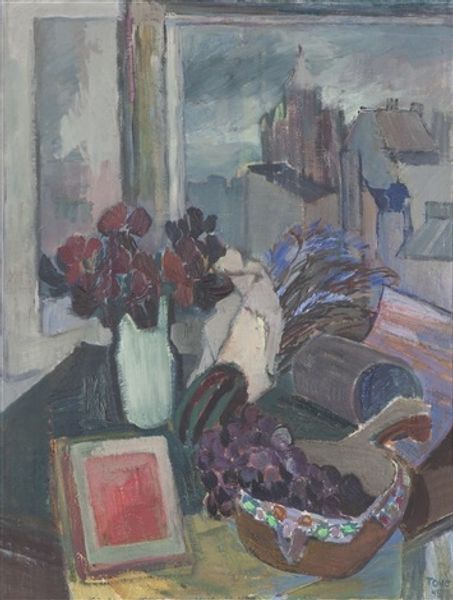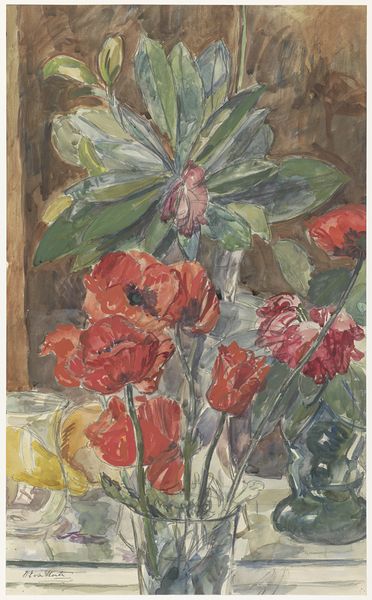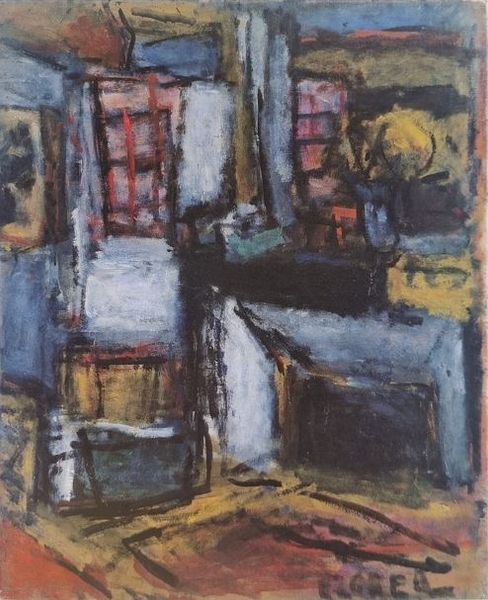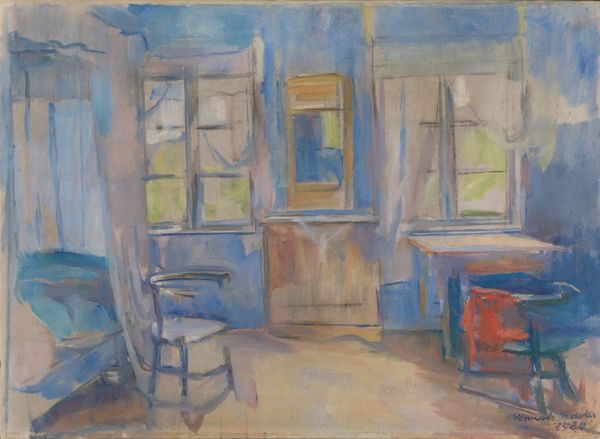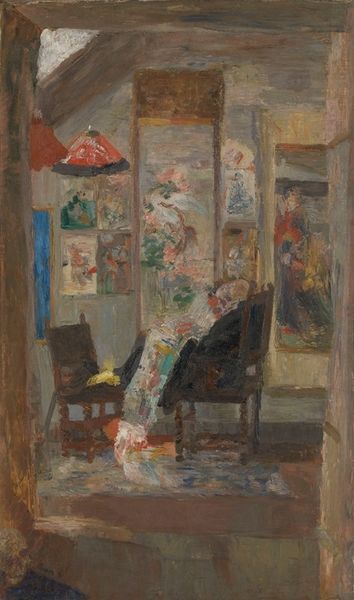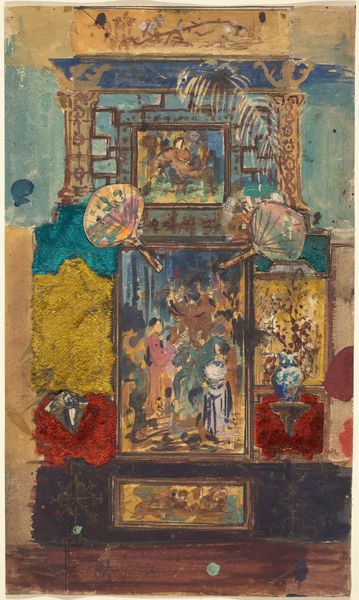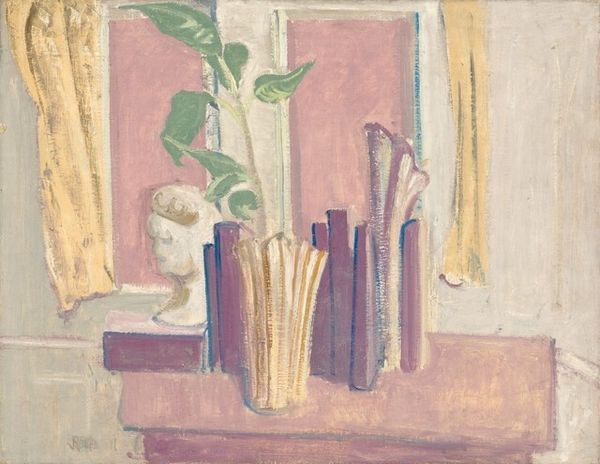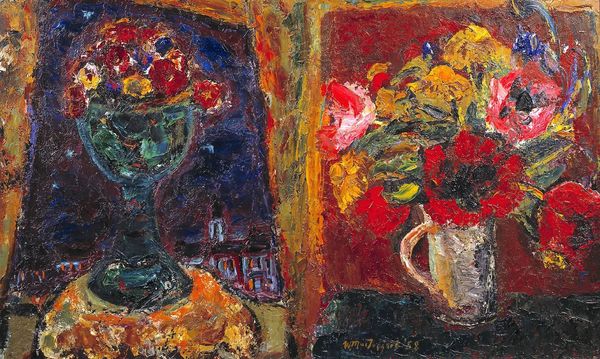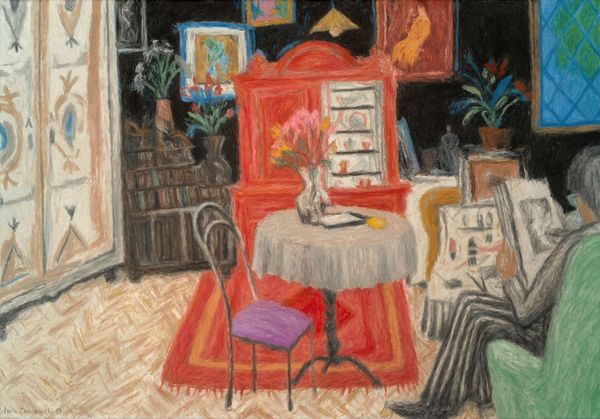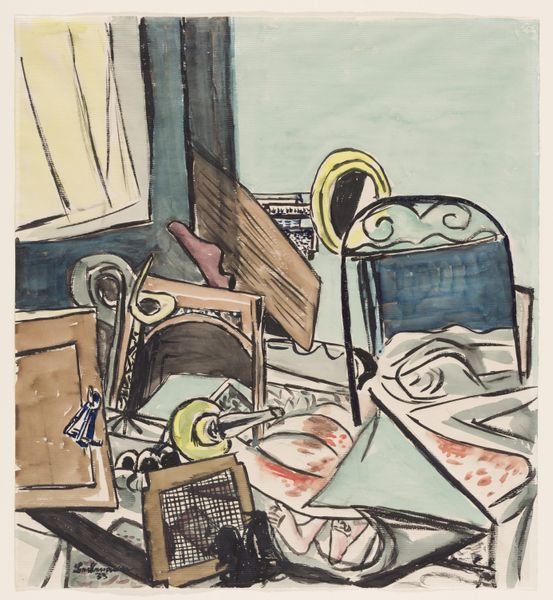
Dimensions: image: 20.32 × 25.4 cm (8 × 10 in.) sheet: 27.94 × 33.02 cm (11 × 13 in.)
Copyright: National Gallery of Art: CC0 1.0
Editor: So, this is Richard Lahey’s "Plasterers in the Next Room" from 1972. It’s a monotype print. I find the composition pretty chaotic; it makes me feel slightly unsettled, but in an intriguing way. What do you see in this piece? Curator: Unsettled, yes, but perhaps it’s a feeling of being *within* chaos, not *threatened* by it, you know? The impressionistic style softens the hard edges. The 'Plasterers' become like rumbling, textural gods – creating the space around us, like benevolent demolition men, with a hidden sense of order, as if the forms already exist but need their definition, to feel real, to breath fresh air, even! Don't you agree, just a bit? Editor: I think I understand what you mean. It is quite domestic-feeling, almost comforting. It makes me think about how sound affects visual space. I'd never have considered the plasterers to be, like, a positive presence though. I automatically associated the sounds with disorder! Curator: Ah, but isn’t all creation, on some level, a disruption? The painting’s layered texture and veiled details – like memories – invite us to consider unseen labour and almost hidden presences. It’s not about perfect stillness but the story etched on every wall. It reminds me, of myself painting over bad choices to find my expression. How do you, coming at this fresh, what does “labour”mean to your perspective on how spaces get their aura? Editor: That's such an interesting way to frame it – the room as an embodiment of history, with these almost ghost-like workers shaping it. Now I'm wondering about all the layers of paint in my own apartment. It completely changes the mood of the artwork for me. It has more gravitas, and a stronger relationship to everyday life. Curator: Indeed. Lahey manages to immortalize something often overlooked, even regretted in it's "happening". We can appreciate that even such prosaic activity contains untold layers of the human spirit. Editor: Definitely given me something to think about. It really adds a whole new dimension to my understanding of art!
Comments
No comments
Be the first to comment and join the conversation on the ultimate creative platform.
